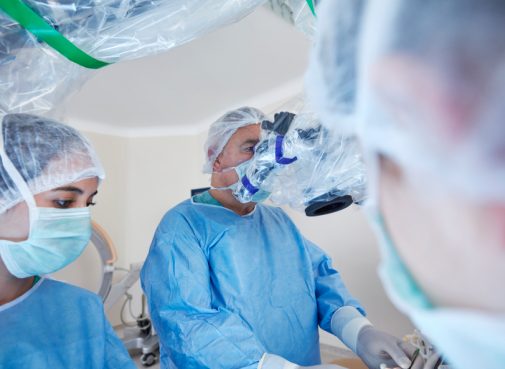Are robot surgeons in your future?

Minimally invasive robotic surgeries are performed by highly skilled surgeons on a regular basis to do everything from removing cancerous tumors to repairing the heart. However, researchers have developed new technology that could lead the way for these types of surgical procedures to be performed autonomously by a robot.
Today, these types of procedures are typically performed by a surgeon who controls the robotic arm with a computer. Small surgical tools are attached to the robotic arm, allowing the surgeon to make small cuts and insert the instruments into the body. The robot then matches the doctor’s hand movements to perform the surgery.
“There are a lot of benefits to using minimally invasive or robotic technology for patients as compared to open surgery,” says Dr. Nikki Neubauer, a gynecological oncologist specializing in robotic surgeries at Advocate Good Samaritan Hospital in Downers Grove, Ill. “The smaller incisions mean that patients will have less pain and discomfort, which translates into a quicker recovery time.”
As technology continues to enhance the medical field, researchers from the Institute for Pediatric Surgical Innovation Children’s National Medical Center in Washington, D.C., developed a robot that can perform a soft tissue procedure completely on its own, without the constant watch and manipulation of a surgeon. They developed a lightweight robotic arm, called the Smart Tissue Autonomous Robot (STAR), which can be placed next to a patient’s bed and is equipped with a suturing tool.
In one study, researchers even tested STAR’s performance against that of real-life surgeons.
During this particular study, STAR was programmed to perform sutures connecting pig bowel segments together. In addition, the procedure was performed manually by a surgeon and by laparoscopy. The study concluded that the STAR robot was on average more accurate than the other two methods.
In fact, 60 percent of the surgeries were performed by STAR without guidance by the physicians. During the other 40 percent of the time, researchers made minor adjustments to the robot.
“Our results demonstrate the potential for autonomous robots to improve the efficacy, consistency, functional outcome and accessibility of surgical techniques,” said Dr. Peter Kim of the Sheikh Zayed Institute for Pediatric Surgical Innovation, in a study news release.
Dr. Kim said that since supervised, autonomous robotic surgery for soft tissue procedures has been proven effective, the next step in the development cycle would be further miniaturization of tools and improved sensors to allow for wider use of the STAR system. In addition, he predicted that with the right partner, some or all of this technology can be used in the clinical setting within the next two years.
“The intent of this demonstration is not to replace surgeons, but to expand human capacity and capability through enhanced vision, dexterity and complimentary machine intelligence for improved surgical outcomes,” said Dr. Kim.
Related Posts
Comments
One Comment
About the Author
Johnna Kelly, healthe news contributor, is a manager of public affairs and marketing at Advocate Christ Medical Center in Oak Lawn. She is a former newspaper reporter and spent nearly 10 years as a public relations professional working for state and county government. During her time as a communications staffer for the Illinois General Assembly, she was integral in drafting and passing legislation creating Andrea's Law, the nation's first murderer registry. In her spare time, she volunteers at a local homeless shelter, enjoys traveling, photography and watching the Chicago Bulls.


















Will the robot have malpractice insurance????